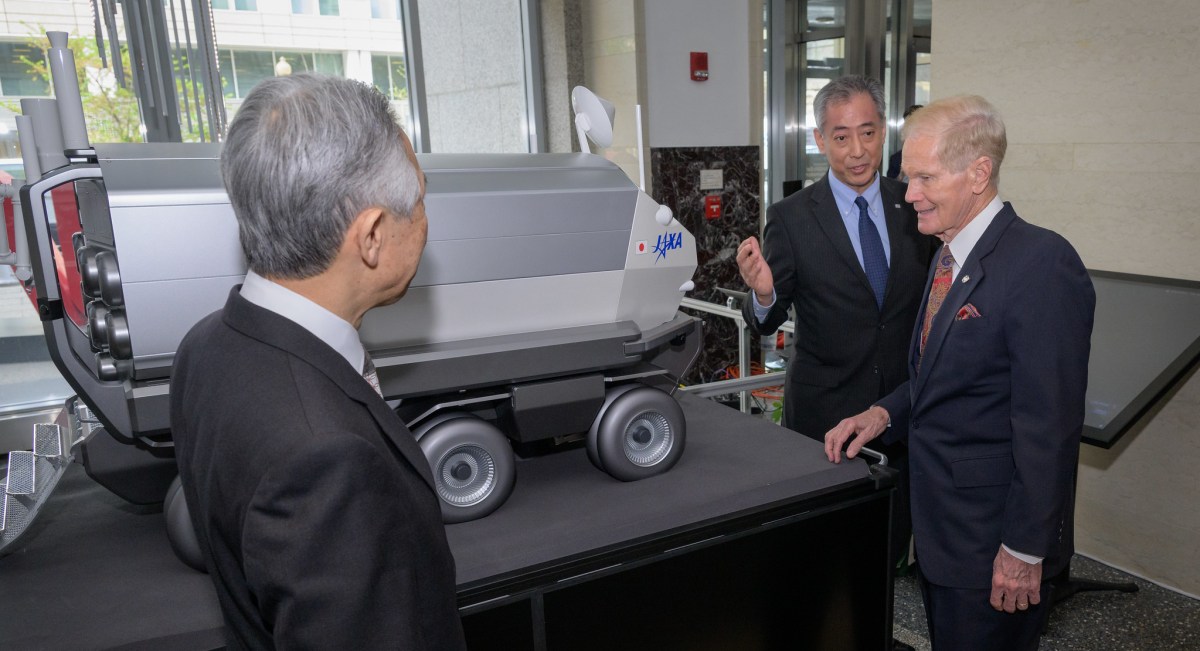COLORADO SPRINGS — Japan will become the first nation after the United States to land an astronaut on the moon as part of the Artemis lunar exploration campaign under an agreement between the two countries announced April 10.
At an event in Washington, NASA Administrator Bill Nelson and Japanese Minister of Education, Culture, Sports, Science and Technology (MEXT) Masahito Moriyama signed an agreement regarding an additional Japanese contribution to Artemis, a pressurized lunar rover called Lunar Cruiser.
NASA will deliver the rover to the moon, which the agencies said should take place ahead of the Artemis 7 mission scheduled for no earlier than 2031. NASA will also provide two seats on future Artemis lunar landing missions to astronauts from the Japanese space agency JAXA, the first agency other than NASA to secure spots on landing missions.
“The pressurized rover will be a powerful contribution to the overall Artemis architecture as Japan and the U.S. go hand in hand with international and industry partners to the lunar surface and beyond,” Hiroshi Yamakawa, president of JAXA, said in a statement. “JAXA is ready to assist MEXT and push this forward with our science and technological expertise to establish sustainable human presence on the moon.”
The Japanese rover will support extended expeditions from Artemis landing sites that are beyond the range of the Lunar Terrain Vehicle that three American companies are developing for NASA under contracts announced April 3. The rover is designed to accommodate two astronauts for up to 30 days, with an overall lifetime of 10 years.
“America no longer will walk on the moon alone. With this new rover, we will uncover groundbreaking discoveries on the lunar surface that will benefit humanity and inspire the Artemis Generation,” NASA Administrator Bill Nelson said in a statement.
The announcement, though, offered no details about when the Japanese astronauts would fly to the moon. “It depends,” Nelson said at an April 10 briefing when asked about schedules, noting that the two countries “announced a shared goal for a Japanese national to land on the moon on a future NASA mission assuming benchmarks are achieved.”
“No mission has been currently assigned to a Japanese astronaut,” added Lara Kearney, manager of NASA’s extravehicular activity and human surface mobility program, at the briefing.
The implementing agreement said several factors will go into crew assignments, including progress on the pressurized rover, or PR: “The timing of the flight opportunities will be determined by NASA in line with existing flight manifesting and crew assignment processes and will take into account program progress and constraints, MEXT’s request for the earliest possible assignment of the Japanese astronauts to lunar surface missions, and major PR milestones such as when the PR is first deployed on the lunar surface.”
The assumption among many in the industry, though, is that at least one of the astronauts will fly before the rover is delivered, and possibly as soon as the Artemis 4 mission, the second crewed landing, in the late 2020s.“We intend to land an international astronaut on the surface of the moon by the end of the decade,” Vice President Kamala Harris said at a Dec. 20 National Space Council meeting.
Despite the uncertainty about when Japanese astronauts will land on the moon, the agreement was welcomed by many. “This agreement represents the culmination of Japanese leadership, vision and resolute support that the nation has shown since the very beginning of the Artemis program,” Mike Gold, chief growth officer of Redwire and a former NASA official, told SpaceNews. “When the first Japanese astronaut steps foot on the moon, it will be a singular moment not just for Japan, but for the entire world.”
In addition to the two landing missions, Japan has a slot on a future Artemis mission to the lunar Gateway as part of an earlier agreement about its contributions to that lunar orbital facility. The European Space Agency has three seats on Artemis missions for its contributions to the lunar Gateway, with two likely to be on Artemis 4 and 5, but it has not been allocated a seat on a landing mission yet.
Canada is flying an astronaut on the Artemis 2 circumlunar mission launching in late 2025 and has a seat on a future Gateway mission. The United Arab Emirates also has a seat on a Gateway mission after completing an agreement with NASA in January to develop an airlock module.
